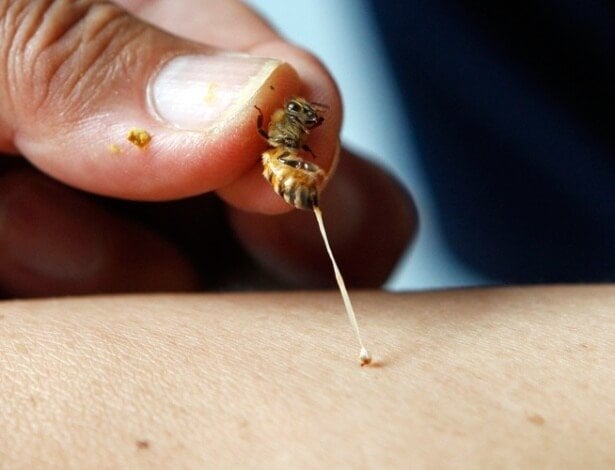 No one likes a cranky colony. They can cause a lot of grief for urban beekeepers and pollination contractors in particular. It seems simple enough to just select the nicest hive and use it to breed from, but measuring temperament can actually be quite difficult.
No one likes a cranky colony. They can cause a lot of grief for urban beekeepers and pollination contractors in particular. It seems simple enough to just select the nicest hive and use it to breed from, but measuring temperament can actually be quite difficult.
Scientists love to measure things. Preferably the way in which you measure something should be objective and repeatable – not influenced by feelings or external factors, and you should get similar results each time you make the measurement.
Scientists have come up with many ways to measure temperament:
- Hitting a hive and counting how many angry bees come at you
- The distance you have to run before they stop trying to get you
- The time until the first sting and the number of stings in a leather ball or flag that is waved at the entrance to the colony for a set length of time. Often the leather is treated with alarm pheromone to encourage a strong response
- The number of guards recruited to the entrance of the colony when filter paper or a cork treated with alarm pheromone is place there
- The voltage at which a restrained bee will extend its stinger when zapped
- How long it takes for caged bees to respond to alarm pheromone and the number of bees involved
- The level of aggression displayed by bees presented with a moving feather in a petri dish – threatening, chasing, pulling, stinging
- The number of bees outside the entrance before and 3 minutes after puffing human breath into the entrance
- The number of bees that fly out of the hive after opening it without smoke
- Shooting a marble at the colony entrance with a slingshot and photographing the entrance 90 seconds later to count the number of bees that respond
- Measuring oxygen use of caged bees after exposure to alarm pheromone, as a measure of metabolic response (increased agitation will increase metabolic rate)
- Rating defensive behaviour on a scale – such as the amount of smoke or protective equipment needed to work a colony
- Rating calmness – the propensity of bees to leave the combs or cluster on the combs when working them
As you can see some of these methods are quite inventive. Some are more objective than others. Some sound both fun and crazy.
Some sound both fun and crazy.
Why do bees sting – Agrifutures Australia
As most beekeepers will know, temperament is affected by the weather and the behaviour of nearby colonies. Colonies should be assessed a number of times over the season to get a better idea of their general behaviour. You should work colonies in a different order each time you evaluate temperament to determine if colonies are naturally defensive or if they have been set-off by nearby colonies being disturbed. If your gloves are covered in stings then you’re not really giving the colonies a fair chance.
These days, most breeding programs are using a scale to rate defence/aggression and calmness. While they can be subjective (e.g. beekeepers differ in the amount of protection they wear), they are quick to perform and don’t require additional equipment. Some studies have reported that it can be difficult to differentiate between colonies if the full scale is not used. Scientists have shown that these measures generally correlate well with results found using some of the methods above.
What should beekeepers do to avoid being stung – Agrifutures Australia
Plan Bee – the National Honey Bee Genetic Improvement Program – will rate temperament as gentleness on a scale of 1 (angry bees) to 5 (best friends forever) and calmness on a scale of 1 (rushing around the combs) to 5 (keep working like you aren’t even there).
If you have an angry hive the best solution is to replace the queen with one that has been selected for good temperament. Angry colonies may take multiple attempts to requeen, so there are some strategies we can use to help acceptance rates.
Acknowledgements:
- Plan Bee (National Honey Bee Genetic Improvement Program) is supported by funding from the Australian Government Department of Agriculture, Water and the Environment as part of its Rural Research and Development for Profit program. The project is further supported by AgriFutures Australia, the Department of Regional NSW (formerly NSW DPI), University of Sydney, Animal Genetics and Breeding Unit, Better Bees WA Inc, Wheen Bee Foundation, CostaGroup, Olam, Beechworth Honey, Monson’s Honey and Pollination, Auston, South Pacific Seeds, and commercial beekeepers.
- Nouvia N, Reinhard J, Giurfa M (2016) The defensive response of the honeybee Apis mellifera. Journal of Experimental Biology 219: 3505-3517
- This article was peer-reviewed by Elizabeth Frost and Tom Gillard.

